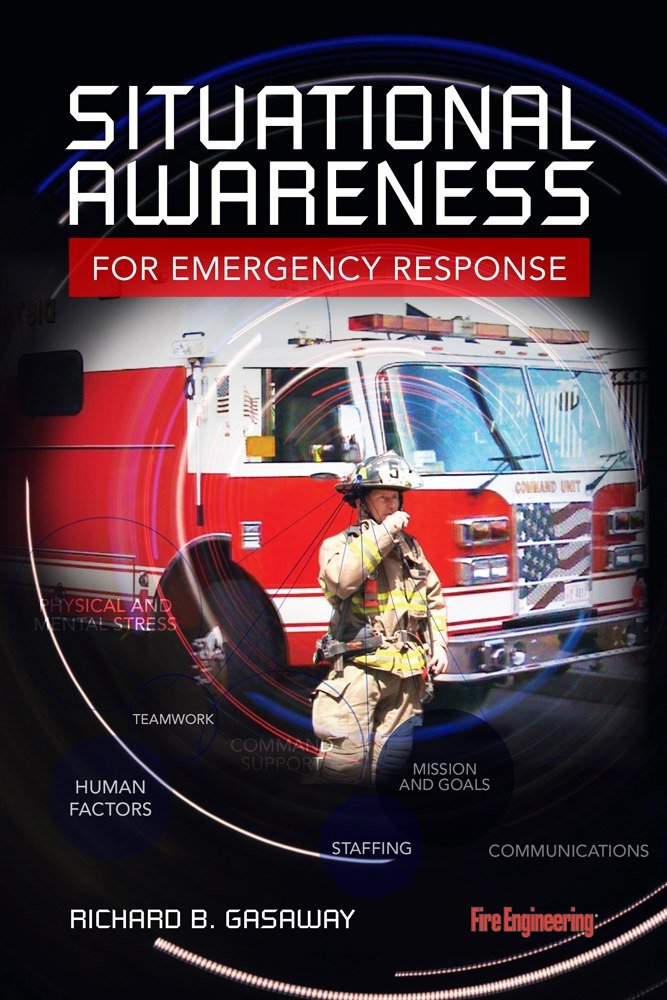 Image 1 of 1
Image 1 of 1


Situational Awareness for Emergency Response
Situational awareness is more complex than simply noticing what is happening around you. An emergency responder must capture clues and cues in the emergency environment, make sense of the information, and predict what will happen next.
Situational awareness is more complex than simply noticing what is happening around you. An emergency responder must capture clues and cues in the emergency environment, make sense of the information, and predict what will happen next.
In Situational Awareness for Emergency Response, Richard Gasaway establishes the foundation of decision making and the role of situational awareness in high-risk public safety environments. He explains his original research on command decisions and the barriers that challenge a commander's situational awareness, and offers lessons learned and best practices that can assist responders in preventing or overcoming the situational awareness barriers.
Situational Awareness for Emergency Response is an ideal resource for incident commanders, line personnel who make high-stress decisions, and students learning to develop and maintain situational awareness.
Features and benefits:
Realize how decisions are made in high-stress, high-consequence, and time-compressed situations
Understand situational awareness and its role in making good and bad decisions
Identify barriers that challenge a commander's situational awareness
Improve your decision making with the lessons learned and recommended best practices
Use the 25-point checklist as an incident evaluation tool to improve safety
Contents:
Acknowledgments
Preface
Part I: Decision making and situational awareness
Introduction
Traditional decision-making process
Recognition-primed decision-making process
Situational awareness
Situational awareness research
Part II: Barriers to commander situational awareness
Staffing
Communications
Physical and mental stress
Workload management
Human factor
Attention management
Command support
Data and information management
Mission and goals
Mental model
Command location
Teamwork
Part III. Lessons & best practices
Lessons for first responders
Fireground command best practices
25-Point command health check-up
Epilogue
by Richard B. Gasaway, PhD, 380 Pages/Hardcover/6x9/2013, ISBN 13: 9781593703073
Situational awareness is more complex than simply noticing what is happening around you. An emergency responder must capture clues and cues in the emergency environment, make sense of the information, and predict what will happen next.
Situational awareness is more complex than simply noticing what is happening around you. An emergency responder must capture clues and cues in the emergency environment, make sense of the information, and predict what will happen next.
In Situational Awareness for Emergency Response, Richard Gasaway establishes the foundation of decision making and the role of situational awareness in high-risk public safety environments. He explains his original research on command decisions and the barriers that challenge a commander's situational awareness, and offers lessons learned and best practices that can assist responders in preventing or overcoming the situational awareness barriers.
Situational Awareness for Emergency Response is an ideal resource for incident commanders, line personnel who make high-stress decisions, and students learning to develop and maintain situational awareness.
Features and benefits:
Realize how decisions are made in high-stress, high-consequence, and time-compressed situations
Understand situational awareness and its role in making good and bad decisions
Identify barriers that challenge a commander's situational awareness
Improve your decision making with the lessons learned and recommended best practices
Use the 25-point checklist as an incident evaluation tool to improve safety
Contents:
Acknowledgments
Preface
Part I: Decision making and situational awareness
Introduction
Traditional decision-making process
Recognition-primed decision-making process
Situational awareness
Situational awareness research
Part II: Barriers to commander situational awareness
Staffing
Communications
Physical and mental stress
Workload management
Human factor
Attention management
Command support
Data and information management
Mission and goals
Mental model
Command location
Teamwork
Part III. Lessons & best practices
Lessons for first responders
Fireground command best practices
25-Point command health check-up
Epilogue
by Richard B. Gasaway, PhD, 380 Pages/Hardcover/6x9/2013, ISBN 13: 9781593703073

